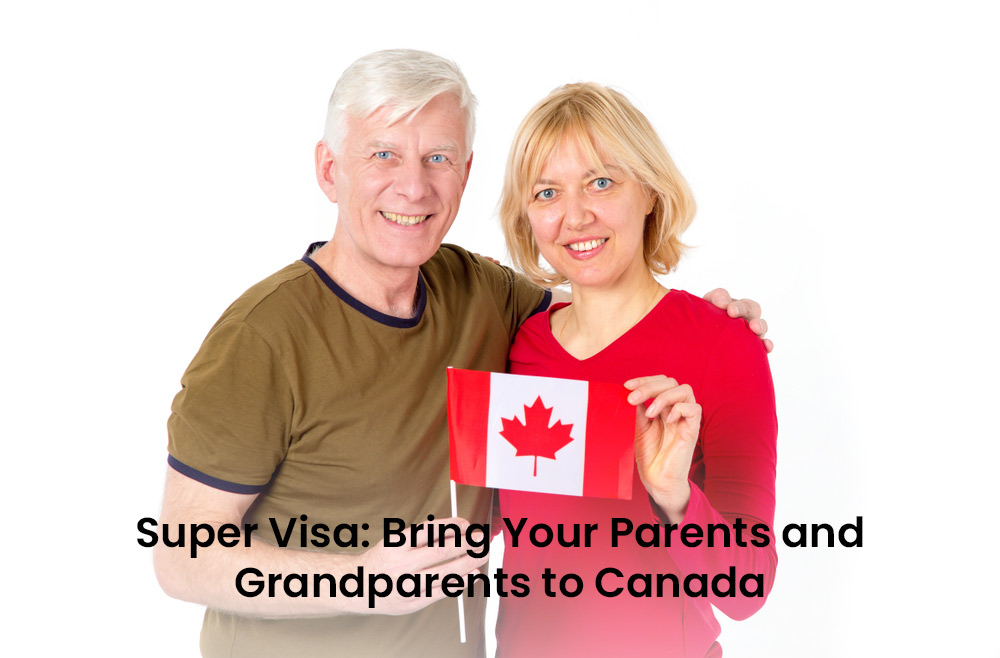
by Immilaw Team | May 9, 2023 | Canada Immigration
It is a common practice in Canada to receive advice and suggestions regarding immigration from immigration consultants, paralegals and lawyers. However, it is essential to identify and understand the significant differences between these three professions before you seek any help related to immigration policies. You will be able to find that there are many eminent immigration consultants, paralegals and lawyers out there who are always willing to offer their professional services to you.
Immigrate to Canada
When it comes to choosing immigration lawyer, consultant or paralegal, your goal should be to find the right person to give you proper advice and whom you can trust with the immigration process. Therefore, it is imperative to get a clear idea of the different services by conducting appropriate research before hiring immigration personnel. Read on to learn more about immigration lawyers, consultants and paralegals.
Free Immigration Assessment
Who can be of help?
Immigration Lawyers
To become a lawyer in Canada, you have to:
- Complete an undergraduate degree with a duration of three to four years,
- Pass a bar examination after completing a three-year degree in law,
- Complete a ten-month articling requirement after passing the bar examination. This is for getting hands-on experience under the supervision of an eminent lawyer.
Generally, lawyers get training in various subjects such as civil litigation, family law and criminal law. However, most lawyers opt to specialize in only one or two areas. Immigration law can be one of these areas of specification. Immigration and refugee law are complex areas with various rules and regulations that can keep on changing. This is why you need to get the help of a proficient immigration lawyer to get the best of the services. Lawyers are regulated by LSO, which means if you have any dispute with a lawyer, you can raise your concern at LSO. Lawyers are expected to be in “good standing” by the LSO. A lawyer in “good standing” is not under any investigation, has paid all fees and has no legal obligations. To maintain a “good standing,” the lawyers should attend twelve hours of Continuing Professional Development (CPD) annually. This indicates that the lawyers are constantly updated.
Lawyers can represent you for any immigration issue and provide you with the best legal advice. This will also include the following:
- Represent you at the Superior Court, Federal Court and Supreme Court of Canada,
- Represent you at the tribunal for your refugee hearing,
- Represent you at the tribunal for an admissibility hearing,
- Provide you opinions and legal advice on complex cases and drafting legal documents,
- Represent you in every interview between Canadian Border Services Agency (CBSA) and IRCC.
Immigration Consultants
You can always seek the help of immigration consultants to deal with your immigration case. An individual must complete a diploma or a certificate course from an accredited college to become a competent immigration consultant. Generally, the duration of the study can be one to two years. Candidates must be able to get through the Full Skills Exam once they finish their studies. Immigration consultants are provided training only in refugee and immigration law. This means they are not authorized to advise on other streams of law. The Immigration Consultants of Canada Regulatory Council (ICCRC) is the regulatory board for immigration consultants. If there is any complaint against a consultant, the same must be reported to ICCRC.
Before starting your application, you must ensure that the immigration consultant you are dealing with is on good terms with the ICCRC. For this, all you need to do is visit the official website of ICCRC and ensure it is “active status” shown for your immigration consultant on the membership list of ICCRC.
Immigration consultants are able to:
- Collate and process required documents for any application for immigration, such as study permits and visas,
- Be your representative for your tribunal hearing,
- Be of great help when writing applications for work permits, sponsorship applications, study permits, citizenship applications, refugee and sponsorship appeals.
Immigration consultants are not able to:
- Draft a legal document,
- Provide legal advice,
- Represent you in a federal court,
- Apply for a judicial review.
Paralegals
For an individual to get qualified as a paralegal, he has to complete a certified educational program from an accredited college, and three options are there for doing so:
- In one year, a paralegal certification program can be completed.
- The program solely focuses on paralegal education, as there is no need for general education.
- Generally, one can earn a paralegal diploma in two years. One can explore various areas of paralegal job activities by getting a paralegal diploma.
- Most of these paralegal diplomas have got work-placement requirements.
- It will take four years to complete a paralegal degree; for this, the person should be able to finish two years of his general education and a work placement.
Every candidate must pass a rigorous seven-hour paralegal licensing exam. In Canada, Ontario is the only province that regulates the paralegal profession. The Law Society Of Ontario (LSO) regulates paralegal professionals. Like lawyers, paralegals must attend and complete twelve hours of yearly training to maintain their professional efficacy. In case of a complaint against a paralegal, it should be reported to the LSO. Paralegals in Ontario can be your representative in small claims courts, especially for provincial offences such as traffic tickets, minor criminal charges, and tribunal hearings, including Immigration and Refugee Board. Paralegals will sometimes work with lawyers and can do their minor practices.
Paralegals are able to:
- Appeal at the Immigration and Refugee Board on your behalf,
- Represent you at an admissibility and refugee hearing,
- Collate vital information and fill out the application forms to present your file to Immigration, Refugee and Citizenship Canada (IRCC).
Paralegals are not able to:
- Represent you at a federal court,
- Apply for a judicial review.
How to choose between the three options?
Choosing the right representative can be time-consuming. However, certain tips can help you make the right choice.
- Just evaluate your situation and see how complicated it is; by doing so, you will be able to find out if the person can be of real help in your case.
- Remember that only lawyers can represent you in a Federal Court for a Judicial Review. By interacting with a lawyer, you can easily find out what type of immigration case you are dealing with.
- Go through the reviews by the previous clients.
- Consult with the Department of immigration law to check the professional’s work experience.
- Speak with various immigration consultants, paralegals and lawyers to find out how they could help tackle your issue. Talking with them is also helpful to determine if the fees are standard and that you are not overcharged.
- Visit the official websites of IRCC and LSO to find referrals
How to avoid immigration fraud?
Whether you are choosing an immigration lawyer, consultant, or a paralegal, make sure that you don’t fall into the hands of an immigration fraud. Immigration fraud can happen if, on your behalf, your representative is making a misrepresentation and that too, knowingly. Therefore, it is very crucial to protect yourself from fraud. The following are some valuable tips that can keep you protected:
- It is imperative to understand and know everything. Let your immigration consultant, paralegal, or lawyer know if you do not speak the language. You can take the help of someone who can translate for you.
- Always read the forms carefully before you sign. Never sign blank forms or forms that contain false information.
- Always keep copies of your documents safe. You can also hand over the copies to someone you trust if you cannot maintain them.
- You should note that you must attend a hearing at Immigration & Refugee Board (IRB) before your immigration claim gets denied. If someone says that your claim got denied without the need to attend a hearing, immediately seek the help of a professional immigration lawyer.
- You will be asked to sign the retainer agreement. It is a contract between your representative and yourself. This contract outlines all the services your representative provides you, the fees they will be charging for their services and the responsibilities of both parties.
- Always read your retainer and find out how much you will get charged since you can inquire about the fee listed in the agreement.
Immilaw Immigration Law Professional Corporation is one of the well reputed leading canadian based immigration law firm located in Canada. Our team of highly qualified and experienced professional lawyers help our clients with outstanding legal representation in all kind of immigration matters, making each case success. Feel free to contact us for your enquiries.

by Immilaw Team | Apr 19, 2023 | Uncategorized
The comprehensive set of rules to make your business immigration to Canada from India successful!
Free Immigration Assessment
Yes, you have come to the right place. Read along to learn more about Canadian business immigration and the hassle-free, proven methods used by the most popular entrepreneurs, self-employed people, business owners etc., from India, who made their dreams come true in their dream destination, Canada!
Business immigration programs of Canada
Options for Canadian business immigration from India
Some of the popular business immigration options that business owners and Indian entrepreneurs use for relocating and settling in Canada are as mentioned below:
The Canadian Start-Up Visa (SUV) is a business immigration program that permits foreign entrepreneurs to immigrate to Canada by receiving support from a designated Canadian venture capital fund, angel investor group, or business incubator. Applicants of the Canadian SUV program must demonstrate that their business ideas are innovative and have the potential to create jobs and economic growth in Canada.
-
Entrepreneur Work Permits
The Canadian Entrepreneur Work Permit is a business immigration program that allows foreign entrepreneurs to come to Canada and operate a business. To be eligible for this program, the applicants must have a fool-proof business plan, meet the language requirements and have sufficient funds. Successful applicants who receive the entrepreneur work permit can also bring their families to Canada. Individual entrepreneurs with this work permit can transition to a Permanent Residence (PR) status after one year of successful business operation in Canada.
-
Intra-Company Transfer (ICT)
The Canadian Intra-Company Transfer (ICT) program allows multinational companies to transfer eligible employees to a Canadian subsidiary, affiliate, or branch. The program facilitates the transfer of knowledge and skills between international offices and supports the growth and competitiveness of Canadian businesses. The program has specific eligibility requirements, including minimum job requirements and is managed by Immigration, Refugees and Citizenship Canada IRCC. After a year of employment in Canada, there will be several pathways to PR status for Indian nationals who arrive on ICT work permits.
-
Provincial Nominee Programs (PNP)
The Provincial Nominee Program (PNP) is a program designed by the Canadian government and the provincial authorities to allow Indian entrepreneurs, business investors and skilled workers to immigrate based on their qualifications and the potential to contribute to the economy of a specific Canadian province or territory. Each region has its selection criteria and eligibility requirements. British Columbia PNP and Ontario PNP are the favourite entrepreneur streams among Indian entrepreneurs.
Best Canadian business options for Indians
The Canadian IT industry offers good scope for Indians, with growing demand for skilled professionals in software development, cybersecurity, data analytics and cloud computing. Canada’s multicultural society, welcoming nature and business-friendly environment make it an attractive haven for ambitious Indian IT professionals. The National Association of Software and Services Companies (NASSCOM), the Indian Non-Governmental Trade Association, has an ongoing and healthy strategic partnership with the Canadian government. According to NASSCOM, Canada is touted as one the best countries globally for the growth and expansion of Indian IT Businesses.
The professional sector of Canada is globally renowned for its competency in HR consulting and financial strategies. The good news is that most of the leading Canadian HR consulting companies have increased business opportunities because of the shift of the existing workforce to non-traditional working environments. As a result, a large number of Indian entrepreneurs, business investors and qualified professionals are being attracted by the ever-booming finance sector of Canada.
The trading activities between India and Canada are essential for both countries as they provide enormous economic growth and development opportunities. India and Canada share a strong trading relationship, with India being Canada’s ninth-largest export destination and Canada being India’s 29th-largest trading partner. Increased trading activities will lead to more business opportunities, job creation, technology transfer and access to new markets.
Business statistics and guidance for Indian SMEs and business investors venturing to Canada
Given below are some of the statistical data accumulated over the years:
- The average investment budget for Indian SMEs and business investors is between $150 to $300.
- The average approval rate is 95%.
- The most common destinations are Alberta, British Columbia, and Ontario.
- The average processing time is two to three months.
Some of the flourishing Indo-Canadian business sectors in Canada:
- Hospitality industry
- IT consulting and services
- Franchised businesses (professional services and retail marketing)
- Trade (Textile industry, Jewellery, Medical supplies)
Significant reasons for rejections or non-approval of business immigration programs:
- Insufficiency of funds
- Inefficiency in convincing the viability of the business plan.
It is highly recommended that Indian SMEs and business investors venturing to Canada should conduct thorough market research to understand the Canadian market and consumer behaviour. They should also pay attention to legal and regulatory requirements and cultural differences. Business statistics such as GDP, inflation, and unemployment can provide valuable insights into the Canadian economy. It is also essential to seek guidance from local experts and establish relationships with potential partners or customers.
Success stories of Indians who reached Canada through us
We are proud to say that we could be the trusted travel partner for several of our highly esteemed clients. We helped them successfully immigrate to their dream destination, Canada, and will always strive to add up to our extensive list of happy clients.
9 significant steps for starting a Canadian business from India
Starting a business in Canada as an Indian can be an exciting opportunity; however, it requires careful planning and execution. Here are the nine steps to start a business in Canada from India.
1. Research: Conduct thorough research on the Canadian market and its associated regulations to better understand the business landscape.
2, Select a specific business structure: Decide on the type of business structure to register, such as a partnership, corporation or sole proprietorship.
3, Register your business: Register with the Canadian government to obtain licenses and permits.
4, Secure financing: Determine your start-up expenses and secure the funding with the help of loans, personal savings or investors.
5, Create a proper business plan: Develop a comprehensive business plan that outlines your goals, business strategies and financial projections.
6, Select a specific location: Decide on the place for your business activities and secure a commercial lease or go ahead and purchase the property.
7, Hire employees: Hire employees if necessary and abide the Canadian labour laws.
8, Set up proper accounting and bookkeeping: Establish adequate accounting and bookkeeping systems to manage your finances & taxes.
9, Launch your business: Launch your business. Start marketing and selling your products or services.
Few significant facts about Indo-Canadian Immigration
The immigration relationship between India and Canada dates back centuries. Since the 1960s, Indo-Canadians have become one of the largest visible minority groups in Canada. Indians have significantly contributed to Canadian society and culture, particularly in business, politics and arts. As per reliable sources of information, Indians occupy almost 4% of the top 10 of Canada’s total population. Most Indians come to Canada on business visas. British Columbia and Ontario provinces are the most preferred Canadian destinations by most Indians who immigrate under business immigration programs.
FAQs
Q: How to get a business visa to Canada?
You must determine your eligibility, collect your documents, complete the online visa application procedure, and attend the interview to obtain your business visa to Canada.
Q: What is the cost of getting a business visa in Canada?
The cost of getting a business visa in Canada varies depending on the type of visa and the applicant’s nationality.
Q: Will I get a visa if I own a business in Canada?
Owning a business in Canada does not guarantee that you will receive a visa. Applicants must meet all eligibility and application requirements.
Q: Is it possible to get a business visa to Canada from India?
Getting a business visa to Canada from India is possible by following the appropriate application procedures and meeting eligibility requirements.
Q: Will I be eligible for Canadian immigration if I buy a business in Canada?
Purchasing a running business in Canada is one of the most viable options for business immigration for entrepreneurs and foreign investors. You can buy a business franchise, invest in an existing business or even buy an existing one. You can successfully shift to Canada with the help of the C11 entrepreneur work permit or try the intra-company transfer method or any other suitable business immigration program. It is highly recommended that you always seek the assistance and guidance of expert immigration lawyers who can professionally handle your immigration needs.

by Immilaw Team | Mar 29, 2023 | Canada Immigration
Ontario will welcome more than 18,000 skilled immigrants to the province by 2025. Federal Govt nods for approval through the Provincial Nominee Program (PNP) in coming years. The Federal Government immigration department allots nomination numbers annually to all provinces. Though no target has been set for 2024, around 16,500 nominations could be made for 2023. Ontario’s 2023 allocation is 36% of the national allocation of provincial nominees.
Free Immigration Assessment
In Ontario, about 300,000 vacant jobs were reported in December 2022. So there will be massive demand for skilled workers in many sectors, like technology, health care, and skilled trades, in the coming years.
According to Ontario’s Immigration Minister Monte McNaughton, 9,000 immigration spots in 2021 grew to over 18,000 in 2025. The latest announcement is a significant win for Ontario’s people and will help control the economic destiny by selecting more skilled immigrants. McNaughton requested the federal government to double Ontario’s PNP quota from 9,750 since 2021, and now it has got approval.
Ontario allocation in 2022 included 2,200 software and IT professionals, 3,900 skilled trades employees, and around 100 nurses and personal support workers.
Sean Fraser, Canadian immigration minister, expressed in a press release that immigration is a crucial solution for the acute labour market shortages and for building a strong economy in Canada. He also spoke about the excellent working relationship with Minister McNaughton and aimed to work together to achieve economic immigration objectives in the province. He emphasized that the Provincial Nominee Program’s increasing growth will support the well-being of communities in Ontario in the future.
Ontario’s Provincial Nominee Program
Ontario PNP is managed by the Ontario Immigrant Nominee Program (OINP), a provincial government department. It consists of programs for economic immigrants, including skilled workers, international student graduates, and entrepreneurs.
Immigration, Refugees, and Citizenship Canada (IRCC) allocates annual nominations, and PNPs can nominate candidates accordingly. The two-step immigration process includes being nominated and then applying for immigration.
But before everything, you must express your interest in immigration to Canada. An Expression Of Interest (EOI) can be made through the Federal Express Entry system (for skilled workers with TIER 0,1,2 or 3 occupations) or by Ontario’s EOI system.
Workers invited from the Express Entry pool by Ontario PNPs are:
- Human Capital Priorities: No job offer is required, but one-year work experience is needed in targeted occupations.
- French-Speaking Skilled Worker: French-speaking candidates with strong English and French proficiency.
- Skilled Trades: Skilled trades workers in eligible sectors.
Ontario’s EOI system used by PNPs consists of the following:
- Master’s Graduate stream: Master’s degree from an eligible Ontario university on a full-time basis at least one year in length.
- Ph.D. Graduate stream: Ph.D. degree from an eligible Ontario university with two years of degree requirements completed.
- International Student: International student graduates with job offers.
- Foreign Workers: skilled professionals with job offers.
- In-Demand Skills: workers in-demand occupations with job offers.
- Entrepreneur Stream: Foreigners can start or buy an existing business in Ontario.
Why Choose ImmiLaw Immigration
At Immilaw Immigration, you may consult a licensed Canadian immigration lawyer and get your visa application filed through a lawyer’s portal. meticulous documentation is required for a successful visa filing.
Please visit our website or email info@immilawimmigration.com
Feel free to contact us for your enquiries.
Read To Know: Immigration Pathways to Canada: For Tech Talent

by Immilaw Team | Mar 4, 2023 | Canada Immigration
A Canadian employer may require an LMIA to hire a temporary foreign worker. A Labour Market Impact Assessment (LMIA) is a document issued by Employment and Social Development Canada (ESDC) that permits an employer to hire a foreign temporary worker to fill labour shortages in certain occupations.
Free Immigration Assessment
International Mobility Program (IMP)
Certain foreign nationals are permitted to work in Canada without needing an LMIA. This is possible through the International Mobility Program (IMP). This program mainly has four streams, which are listed below in detail.
1. Competitiveness And Public Policy
This stream provides LMIA-exempt work permits to those foreign nationals whose work requires limited access to Canada’s labour market. This is necessary for public policy reasons to maintain competition between Canadian institutions and the economy.
One of the unique programs that come under this stream is Post Graduate Work Program (PGWP). According to this program, an open work permit for up to 3 years is issued to an international student who has graduated from a study program at any designated learning institution. They could work under a Canadian employer even without having a job offer at the time of their application for the work permit.
A program under this stream provides an open work permit to spouses and common-law partners of full-time international students and foreign nationals who have migrated as skilled workers to Canada.
2. Significant Benefit
This stream provides work permits without LMIA to foreign nationals who offer Canada significant cultural, social, and economic benefits. It is determined by examining their previous records of achievements, using testimonials from people in the same field of work, etc.
Entrepreneurs/Self-Employed, Intra-Company Transfers, and PNP nominees as Entrepreneurs are some of the programs within the significant benefit stream of the IMP.
3. Reciprocal Employment
The third LMIA-exempt work permit stream allows foreign workers to work in Canada when Canadians have similar work opportunities abroad. It creates or helps maintain relationships with countries around the world.
Several programs like international agreements and international exchange programs help create work opportunities between countries.
CUSMA (Canada-United States-Mexico Agreement) is a trade agreement between Canada, the US, and Mexico. Admission of foreign nationals under these agreements benefits the country.
Under International Experience Canada (IEC), foreign nationals who apply through the IMP from countries that maintain working relationships with Canada do not require an LMIA.
4. Charitable And Religious Workers
This stream is for people who desire to work in Canada to carry out duties for religious or charitable organizations. They can work without an LMIA in Canada. It includes work that relieves poverty or benefits the community through education and religion.

by Immilaw Team | Jan 5, 2023 | Canada Immigration
What is A super Visa?
The Super Visa enables parents and grandparents of Canadian citizens and permanent residents to enter the country as guests for up to five years (starting on July 4, 2022) without needing to reapply for their status.
Super Visa
Grandparents and parents are allowed to reside in Canada for a long time. Those who possess a Super Visa may seek an extension, which might enable them to stay in Canada as a tourist for up to 7 years. The Super Visa permits parents and grandparents to enter Canada several times for up to 10 years.
Free Immigration Assessment
Eligibility Criteria
To be eligible for a super visa, the necessary conditions are:
You must be-
- Be the parents or grandparents of Canadian citizens or permanent residents
- Possess a letter showing the intent to invite you to visit Canada, signed by your child or grandchild, that says the following:
(a) Consists of a guarantee of financial assistance for the period of your visit
(b ) Contains a concise list of the persons living in this person’s home
- There must be a copy of that person’s citizenship or permanent residency card.
- Contains the health coverage provided by a Canadian insurance provider that is:
- At least $100,000 in emergency coverage is sufficient for at least a year after admission.
- Possess a document showing that the medical insurance is fully paid.
Financial Proofs Required
The child or grandchild inviting you must provide evidence that their home earns at least the required amount of money. Examples of documents that can be used as proof of finances include the:
- A T4/T1 for the current tax year or a Notice of Assessment (NOA).
- Statements on Employment Insurance Benefits
- Employment letter including salary, job title, job description, date of hiring, and payment statements.
- Bank statements
The Applicant is Required To Apply For The Super Visa
- From outside of Canada
- Have your visa printed
- Take a medical examination for immigration (forms and instructions issued by the visa office after the application has been submitted).
- Dependents are not authorized on this application.
Who Can Apply for a Super Visa?
Parents or grandparents of Canadian citizens and permanent residents can apply for the Super Visa. On a Super Visa application, only parents or grandparents may be listed, along with their spouses or common-law partners.
Canadian Immigration
Super Visa Application Process
The application process is similar to that for a Temporary Resident Visa. There is a need for additional documentation to ensure that they will be taken care of during their stay in Canada. The Canadian visa office in charge of the applicant’s place of residence outside Canada is where the application should be processed. Necessary conditions-
- A letter of invitation from the grandchild or child living in Canada;
- Document demonstrating that the grandchild or child meets the LICO minimum income requirement
- Evidence of parental relationships, such as a birth certificate designating the person as a parent;
- Evidence of medical insurance coverage with a Canadian insurance provider for at least a year.
Factors are taken into account while the parent’s or grandparents’ application is being processed-
- They must be actual visitors to Canada who intend to depart on their own after the tenure for stay is over
- Ties with the country of origin
- The reason for the trip, the family’s wealth, and the overall political and economic stability of the native nation of origin
- Analyze the documents provided
For support and assistance in obtaining a super visa, you can contact Immilaw Immigration Law Professional Corporation. The lawyer’s vision, knowledge, and expertise strengthen you to achieve the desired goal smoothly and systematically.
We can be reached at info@immilawimmigration.com






